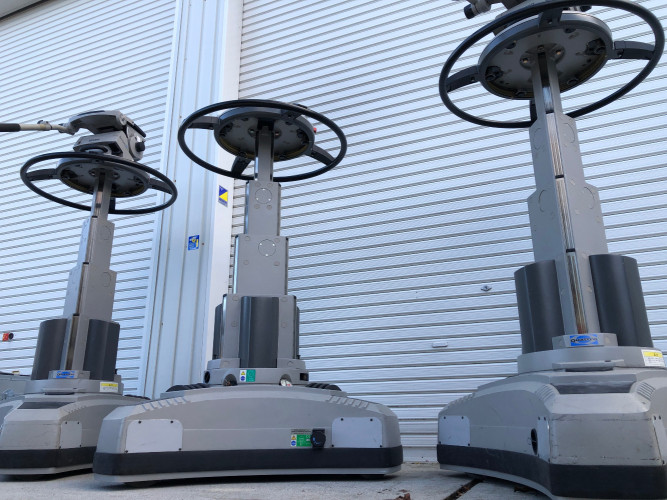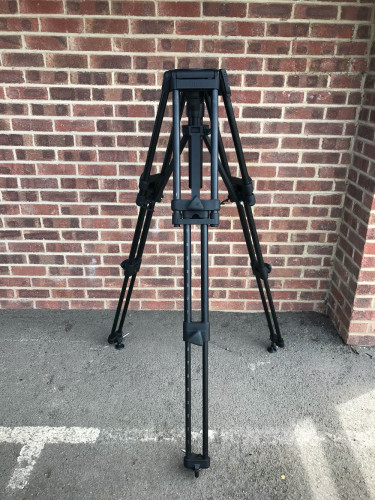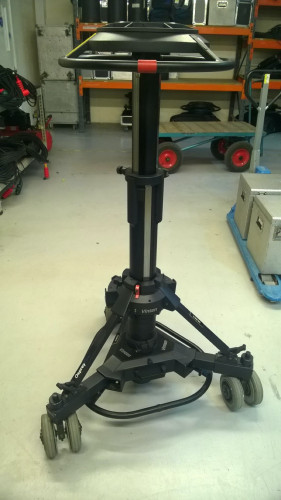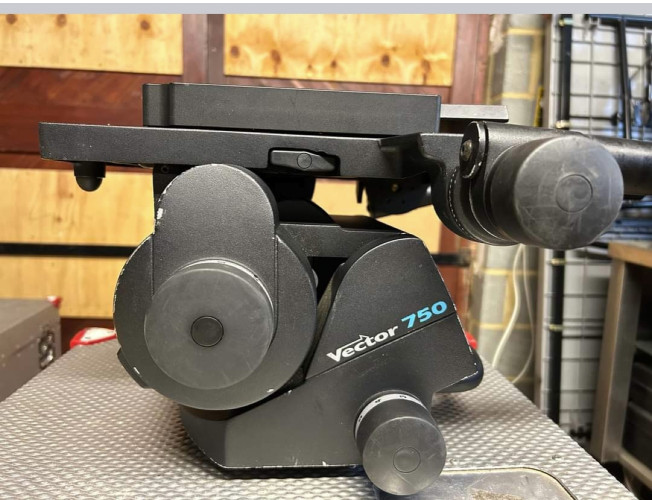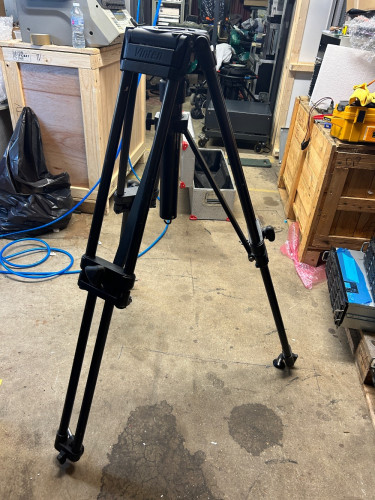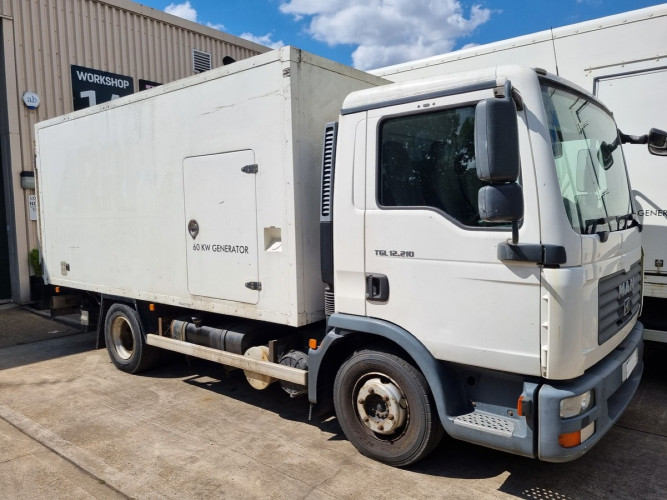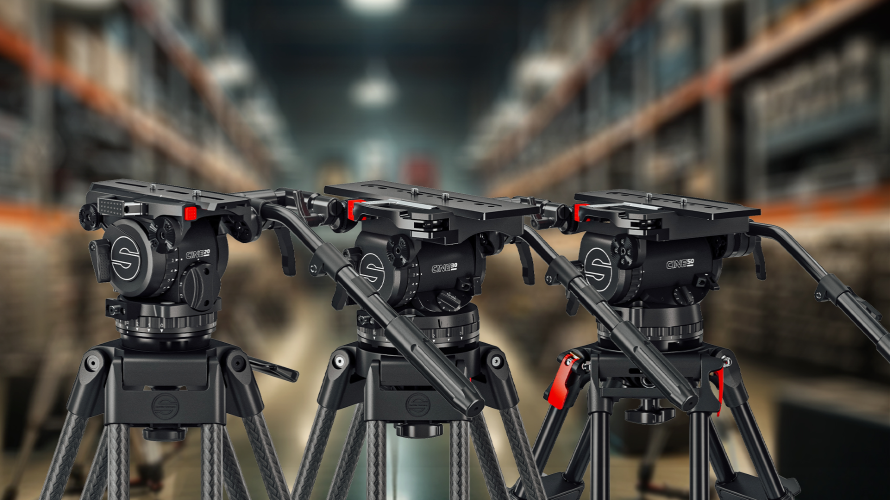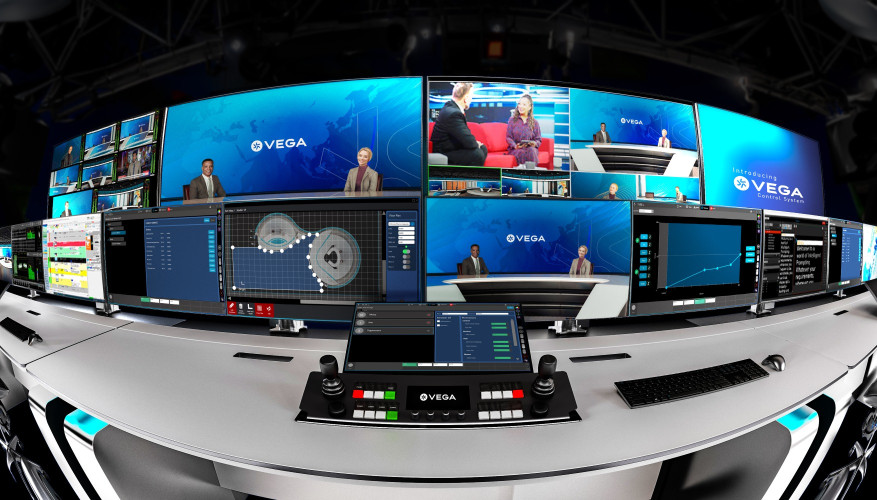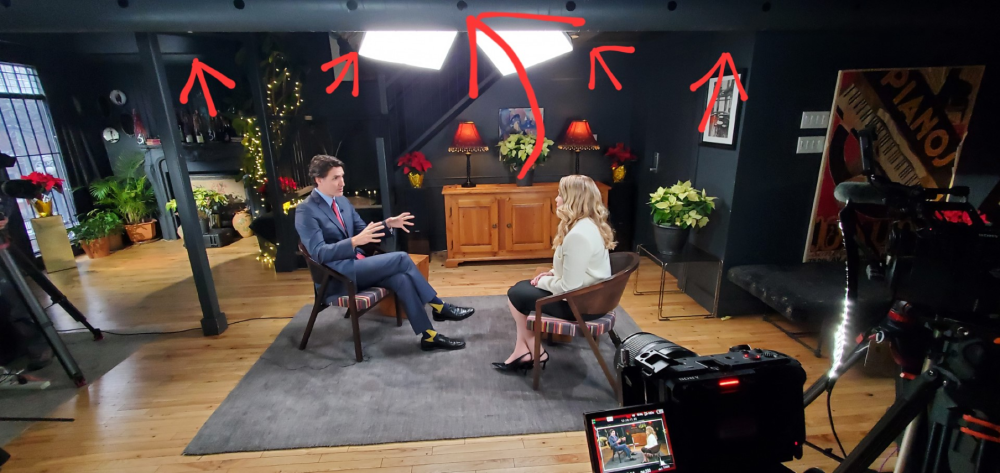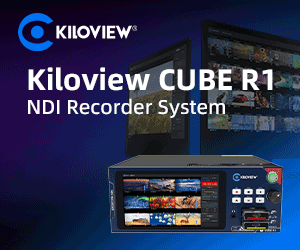A conversation with Peter Harman, Vinten Product Manager

Author: Bob Pank#
Published 1st June 2010
Vinten is celebrating its centenary in 2010. What were the origins of the business?
William Vinten was an engineer with a passion for quality. He set himself in business to repair friends’ bicycles at the age of 13, did a full apprenticeship in a machine shop, and worked for Frederick Lamplough, the steam car pioneer.
But it was seeing his first movie in 1896, at the age of 16, that changed his life. He got involved with cameras and projectors, and met a man named Charles Urban who employed him. Urban, an American, was Edison’s representative in Europe, and manufactured projectors in a workshop in Wardour Street, London.
How did Vinten move from being Urban’s engineer to running his own company?
Urban was an entrepreneur and wanted to be out there looking for new business opportunities. As soon as he realised how good William was he first made him manager, then sold him the engineering workshop.
On 1 January 1910 the Wardour Street premises had a new sign above the door: William Vinten, Cinematograph Engineers.
What did he make?
The first order was from Urban, for another 25 Kinemacolor projectors. But Vinten quickly developed a reputation for being able to fix cine cameras. And having learnt about other cameras, he started developing his own.
His plans were disrupted by the first world war. He was first called upon to fix a problem the Royal Flying Corps was having with the radial engines of the first warplanes, then he won a contract to develop a camera to be mounted on the side of an aircraft, to capture the scenes of battle from the air.
By the end of the war the factory was turning out precision parts for aircraft – with a rejection rate of less than half a percent – and manufacturing cameras.
The link with flying cameras remained a key part of the Vinten business until the 1980s, when the reconnaissance business was sold to Thales. Four of William’s five children worked in the business, with elder son Charles being particularly keen on reconnaissance cameras.
For our industry, the name Vinten is synonymous with camera pedestals. How did that come about?
William’s younger son Bill had inherited his father’s love of the movie world, and when he was called up in 1939 got himself attached to the Royal Navy Film Unit. Here he quickly proved himself to be an extremely adept lighting cameraman, and when the war ended in 1945 he went to work for a succession of film studios.
This was the early days of television, and he quickly developed skills and understanding in the new medium. He returned to the family business and, when the BBC put out a specification for a studio pedestal, Bill already understood the nature of the challenge and led the development team.
The result was the HP 419, the first Vinten hydro-pneumatic pedestal. While various external experts said it was not possible to build it – they thought it was impossible to create seals good enough to retain the oil and gas pressures which balanced the column and still allow smooth movement – the HP 419 was a tremendous success and laid the foundation for the future of the company.
Was the HP 419 the only product at the time?
Linked with the development of the pedestal, which allowed free movement around the studio floor, was the need for a pan and tilt head to go on top. Cameras in those days were extremely heavy and, in the days when all television was live, it was not practical to expect the operator to hold an unbalanced load in position.
So the team had to develop a tilt mechanism which kept the camera’s centre of gravity above the point of balance at all times. This was known as the Mark III head, and it was as revolutionary as the HP 419.
Armed with this knowledge, and a rapidly growing market in television, Vinten developed a range of products, such as the Heron crane, a remarkable support which allowed the camera to be raised as high as 3m, but which could be crabbed as well as steered around the studio floor.
For many camera operators their first Vinten experience was with the Fulmar pedestal. What are its origins?
By the 1960s there was growing interest in colour television. The first generation cameras were huge and very heavy – with the camera, pedestal, head and prompter an operator could be pushing 350kg or more around.
Vinten needed to develop a new pedestal to support this weight, so went back to the drawing board. This time the team came up with a design which did not need oil but was fully supported on a column of gas, with some ingenious mechanical linkages to provide a perfect counterbalance for the payload in any position.
This was the Fulmar pedestal which sold successfully around the world. The design principle behind it remains at the heart of today’s Vinten Quattro pedestal.
You mentioned that the Fulmar provided a perfect balance for the camera. Why is this important?
What an operator wants is for the camera to move smoothly when required, and to remain perfectly still otherwise. It should feel as if it is weightless in three dimensional space.
Gravity would rather you did not do this. In a pedestal it obviously wants to pull the camera to the lowest point, so the counterbalancing force – the column of nitrogen in the case of a Vinten Fulmar or Quattro – has to neutralise gravity precisely. To do that at any height within the range is what makes it such a challenge.
For the head, the problem is that if you balance the head with the camera level, as soon as you tilt it forward the centre of gravity will be ahead of the point of balance so the camera will want to continue tilting until it is pointing straight down; if you tilt up gravity will want to continue the move until you are looking at the sky.
Friction is not the answer: the operator needs to be able to move smoothly and subtly, without having to force against unwanted resistance.
So what is the solution?
Richard Lindsay, who until very recently was Vinten’s head of innovation, was given the task of understanding the mathematics behind these questions of storing energy to precisely neutralise gravity. He developed a set of equations that unconditionally balance a load. It is this which we call Perfect Balance.
From the mathematical understanding we have developed a number of practical solutions. The Vision range of pan and tilt heads were the first to deliver Perfect Balance, and with the new Vision AS range Vinten delivers this operational ideal for payloads as low as 3.5kg. At the other extreme, Vector heads are ready for very heavy loads, including dual camera rigs for stereoscopic 3D.
With the studio Vision and Vector heads this extends all the way up to Perfect Balance for heavy combinations of studio cameras with prompters and confidence monitors, or outside broadcast cameras with very heavy long zoom lenses.
Vinten is very proud that, in this its 100th year, it has received a Queen’s Award for Enterprise in the Innovation category, for the development and continuing implementation of Perfect Balance.
Is the solution always mechanical? Does electronics have a part to play?
There is no doubt that precision mechanical engineering, in the form of Perfect Balance and the equally important fluid drag, is the best way to deliver to the camera operator the all-important feel, the knowledge that the camera will always move in a completely predictable way and will stay precisely on location when left.
That is not to say that there is no place for electronics in Vinten products, though. I can offer a couple of examples.
Very long lenses for sport outside broadcasts have already been mentioned. The problem is that, at the extreme zoom, the tiniest movement of the camera looks like an earthquake. Some say that the pulse in the camera operator’s thumb can be visible on screen.
Lens manufacturers have tackled this issue with dynamic image stabilisation. The problem then is differentiating between wanted and unwanted movement, or the image could lag as the stabilisation catches up. By placing sensors in the head – the Vinten Vector 950 Active – the lens can identify what is deliberate operator input and so eliminate lag.
The same precision sensors – encoders with a million points per revolution, giving resolutions in fractions of a millimetre and fractions of a degree – can be used to stream location data to virtual reality graphics systems, keeping live action and VR in perfect synchronisation.
This, too, is moving from the studio to the outside broadcast, allowing graphics to appear on the sporting field. At NAB this year we demonstrated the first prototype of the Vinten Vector 750i, which adds the same precision positional detectors to the most popular OB head.
Would William Vinten recognise the company that still bears his name?
Computer controlled milling machines have replaced some of the manual tools in the factory, it is true, but otherwise the factory floor maintains absolutely the traditions of the founder.
William Vinten insisted on the highest possible standards, with every machinist responsible for testing his own work. That is still the case today: the products depend on precision engineering, and quality control is everyone’s responsibility. Remaining at the top of the industry for 100 years – and being poised for continuing success in the next 100 years –depends upon it.



